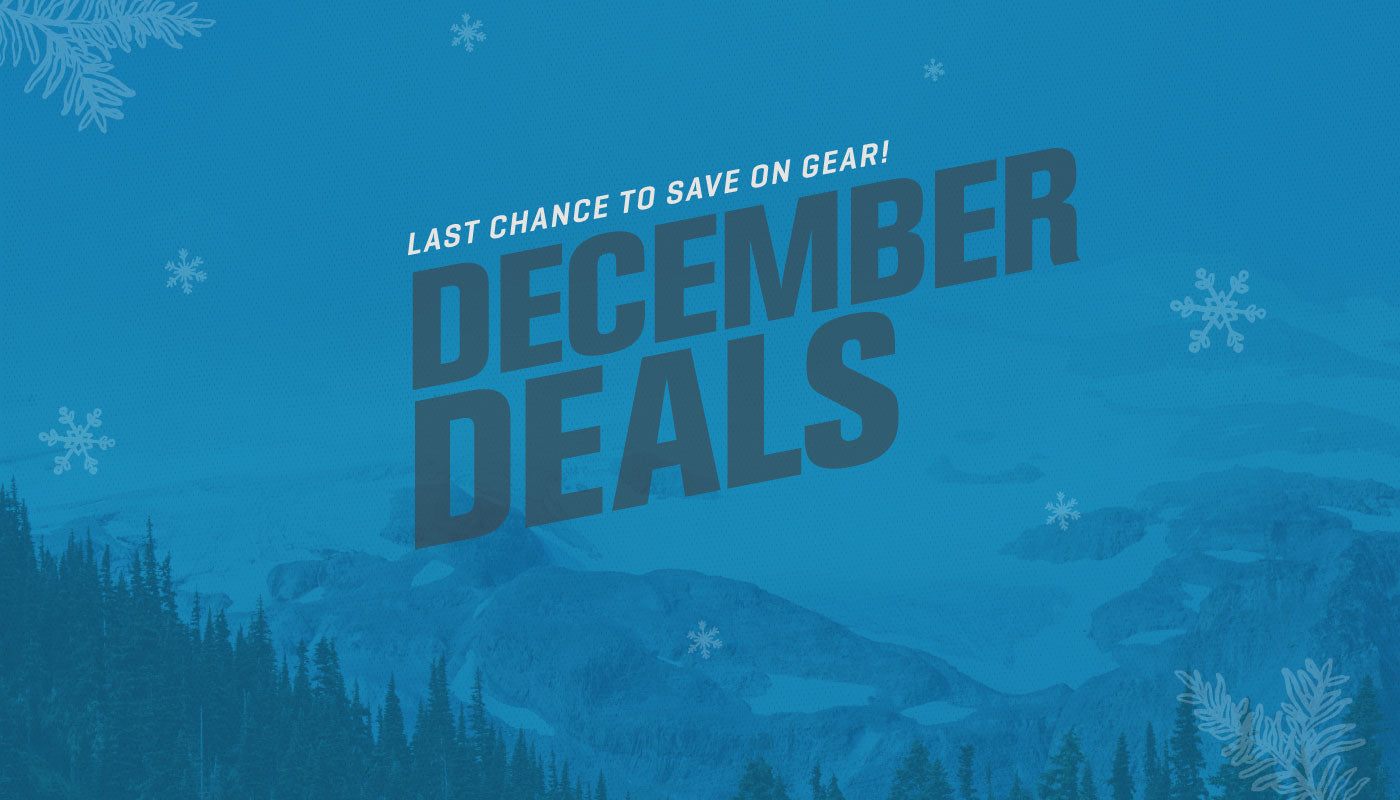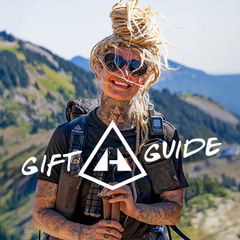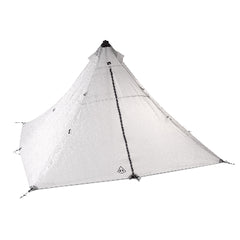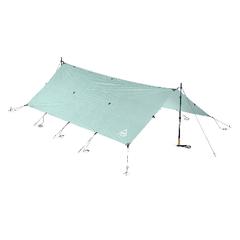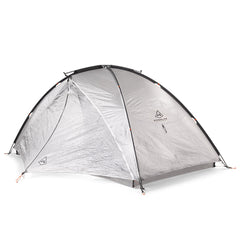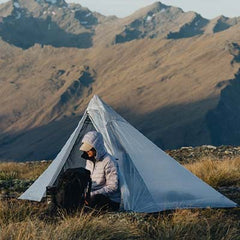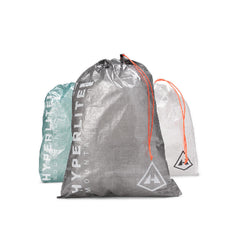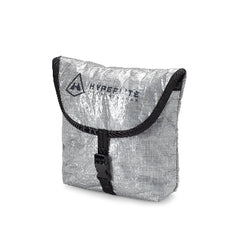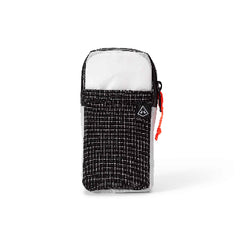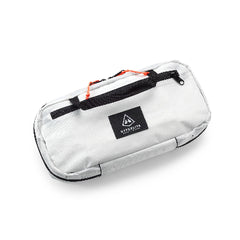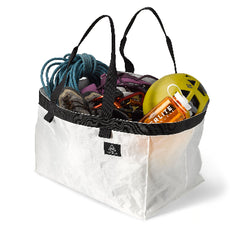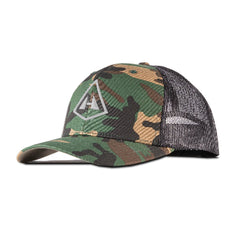Words and Photos by Betty Kellenberger
Allow us the extreme pleasure of introducing you to, at 80, the oldest woman to ever complete an Appalachian Trail thru hike. Aptly trail-named, "Legend," Betty Kellenberger is an absolute boss, and a fount of wisdom, inspiration, and encouragement.
It has taken me four years to finally complete my thru hike.
Coming off trail this year was so much more fun than it's been in the past. I started out three separate times, planning to do a thru hike. I was forced off the trail by a "series of unfortunate events": Lyme, severe dehydration, a concussion, and a fractured ankle. A fractured knee, a torn shoulder, as well as one of the worst hurricanes to hit the south, Helene.
This year, I came off the trail as a champion, and I have enjoyed being feted ever since. I have never had occasion to Google myself before, but at the moment, it is fun. The title, "Oldest female to complete an Appalachian Trail thru hike," however, has forced me to admit my age. I suppose now there will be even more people who feel they must tell me to stay home and quilt.
I hope they quickly realize that their concerns won't keep me off the trail. I don't hike because I can. I can because I hike. A sedentary life is one that is often shorter and filled with more aches and pains. I prefer playing in the woods.
My biggest concern at the beginning of my hike was "Could I finish?" Walking on a paved, flat surface for 2000 miles was way beyond daunting, and I was looking at the AT with over 40 4000' climbs with rocks, roots, and long stretches with no access to food, water, or a bed. I didn't even have a partner.

I remember I was still in Georgia when I fell face-first into a pile of rocks.
Once the blood was staunched and I was back on my feet, one of my first thoughts was, "I'm still hiking. I didn't quit." I felt grateful that the fall did not take me off course. It took many falls, illnesses, fractured bones, and exhaustion to convince myself that as long as I get up and start again, I have the opportunity to finish.
I believe that difficult tasks, tough goals, and hard trails offer us the greatest rewards if we can stick to our plan and carry on. My mantra became, "Rise up. Take courage and do it." Ezra 10:4
Gear was carefully reviewed, studied, and then selected, but until I spent time on the trail, I didn't know what would work for me and what wouldn't.
My height, or lack thereof, made pack selection difficult. That and the lack of choices due to Covid and the "pipeline" that always seemed to be backed up.
I was fitted by a local outfitter with an alternate pack when my first choice was unavailable. Once on the trail, I quickly learned that it wasn't going to work. Shoulder straps never touched my shoulders, and my hips had to carry the entire wobbling weight. By the time I reached Mountain Crossing (less than 100 miles in), I was ready to make a change. They saw the problem and searched their stock for a better fit. They admitted failure rather quickly and hesitatingly suggested a child's pack.
I am less than 5 feet, and that seemed like a solution. The pack fit better, but the quality always left me trying to keep the straps adjusted and my pack in proper alignment.
It was Trail Days in Damascus before I met my forever pack. My partner, a true gear head, had researched them, tested them, and had me try on every pack available at the vendor tables. When at last he allowed me to try on the Hyperlite, I realized that I'd never before had a pack that fit. That and its light weight and strength sold me. At last, I had my pack.
In the end, my pack – inside and out- looked a great deal different from what I started out with. A big revelation for me came the day my hiking partner (6'3" wounded warrior, USN) asked me to pass his pack over to him. I was startled to discover that it weighed about the same as mine. I was pretty sure that this wasn't fair.

I set out to lighten my load. Every item was evaluated. I quickly learned that the lighter the gear, the bigger the investment had to be. Over the last three years, I have replaced almost everything except my Hyperlite pack.
A required item for a hike of this magnitude that I deemed a necessity was a sense of humor. There will be days of disappointment, days that challenge your view of what you think you can do, both more and less. Days of great joy, days of pain, both physical and emotional. You will have days in which you question all life choices, right down to the food you consumed before you started to climb the current hill. A sense of humor will fuel you and your efforts to complete your hike.

You're encouraged to hike your own hike. That is a reference to more than your pace and distance. It includes everything that makes it possible for you to carry on. Breaks can be long, short, often, or rare. Your strengths might be early mornings or late into the evening hiking. For example, I am an early morning hiker who needs many short breaks It includes the food your body requires to work effectively. Zeroes, Neroes, and when your body needs to take some downtime. Remembering it's not a race of any kind. Slow and steady leads you to Katahdin. My journey was always intended to be my journey. I saw no reason to share my story until I met Java.

We shared a shelter along with several hikers. During a lull in the conversation, Java asked me for "Pearls of wisdom," and I shared the following.
1) Our journey is the reason we are on the trail. The goal isn't the destination. Reaching Katahdin means our journey is over. Enjoy the hike. Don't race to be done.
2) Don't let the fears of others control you. There will always be someone – usually someone you truly care about – who will have concerns/fears for you. They want you to stay safe, i.e., stay home.
3) The fear we need to deal with is our own. I share this as an example of my own fear. I had climbed a mountain and decided to rest and have lunch at the top. James was already on top and doing the same. I didn't know James. He was traveling in the opposite direction. I shared with him that I was afraid to tackle New Hampshire and Maine on my own. At that time, I was hiking solo. His advice has become basic to my life philosophy as well as to hiking. He gave me permission to quit before I got there, assuring me that no one would point at me and say "tsk tsk"– but he said it would mean fear wins. An alternative was to go, try it, and if I failed, I would know the fear was rational, but it wouldn't automatically lead to a win. I called James from New Hampshire near the Maine border.
I am frequently asked for advice from others who think they would like to try it. "It" can be any form of fitness/exercise, but my advice remains the same. Start where you are. Do what you can. Increase your efforts as you gradually get stronger. Soon you'll be able to go out hiking in the woods.
Our biggest hurdle remains in our heads. If we believe we can't, we can't. Don't focus on what you can't do; work with what you can do.
At no additional charge, I offer this mantra to use when things get a bit squeaky: "If Betty can do it, I can do it." All of this advice comes with a warning, as well. Once you hike, the trail will not let you go. It will always be calling, beckoning you back.
